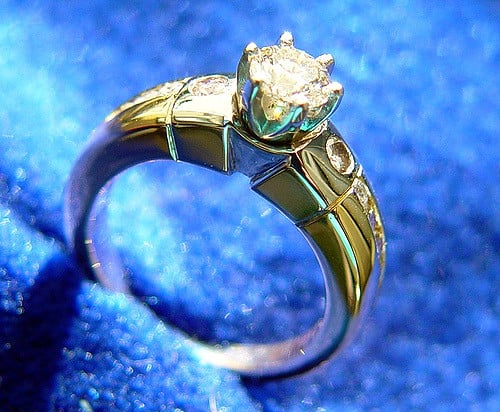Cut Diamond Grade Categories: The Hanneman Diamond Cut Grading System, Lesson Three
The Hanneman System simplifies cut diamond grade categories. Learn how to identify the worst cut stones quickly before taking unnecessary measurements.
2 Minute Read
Cut Diamond Grade Categories
You can fit cut diamonds into one of five categories. Not renowned for my tact, I simply call them Best, Better, Good, Junk, and Garbage. Granted, retailers use more euphemistic terms. However, they remain undefined. But, never mind what they're called. By the time we finish, we'll dispense entirely with all such subjective terms and be able to assign two precise, objective numbers to any stone. These numbers will have a universal meaning. They will transcend all previous subjective designations and will be unambiguous.
How to Read Between the Lines of Grade Reports
First, consider the present situation. Take the information supplied by sellers and required by truth-in-advertising laws. If you know how, you can read between the lines of their reports.
Here is how, starting from the bottom up.
- If the stone is set in a mounting and sold without a grade report of any kind, rest assured it would grade either as Junk or Garbage.
- If the stone is sold with a grading report, READ IT. In its simplest form, you should still see notations relative to the diamond's weight, color, and clarity, as well as numerical values for its diameter and total height or depth. We'll consider this data in a moment.
- If top-class jewelers offer you a diamond, they'll probably sell it unmounted and accompanied by a fancier grade report. It will list all sorts of measurements: diameter, table size, crown height, crown angle, girdle size, pavilion angle, culet size, polish, finish, and other comments. Don't let this plethora of data confuse you. You don't need all this to grade a stone. Junk is junk, and, if you know what to look for, it's obvious.
Taking out the Trash and Garbage
Well-cut diamonds have certain characteristics. So do Junk and Garbage. For those who can, I would suggest visiting your local shopping mall. There, you'll find diamontologists or gemologists who will happily educate you. They have numerous stones to illustrate the different features. Look at their stones. Ask questions.
If the girdle obviously appears too thick or too thin, the table appears too large or too small, or the culet is noticeable, you're dealing with Junk, at best. If you wish to confirm this, measure the stone. You can also review the numbers on the report for total height and diameter. The total height of the diamond is the important number. If the height value doesn't fall between 58% and 64% of the diameter, you're dealing with Junk or Garbage.
Diamonds are sold by nominal weight. A three-quarter carat (0.75-ct) diamond must weigh at least 0.70-ct to qualify. Bear this in mind. Diamond cutters aren't fools. They know, for example, if they leave a little extra weight on what should produce a nice 0.69-ct stone in order to produce a 0.70-ct stone, they will increase their profits. Consequently, you'll find an inordinate quantity of 0.70 and 0.71-ct stones for sale. Most of these stones have been cut for weight rather than beauty. They deserve to be called Junk.
If your stone passes the preceding tests, you've eliminated the Junk and Garbage diamond grade categories from further consideration. Now, you need to determine only two additional properties: crown angle and pavilion angle.
If your stone didn't pass these tests, don't bother with determining those additional properties. You'll only waste your time. Cut grades are based on the worst properties of a stone, and you've already found them.
The Hanneman Diamond Cut Grading System Series
- Introduction, Lesson One
- Basic Proportions, Lesson Two
- Grading Categories, Lesson Three
- Evaluating the Cut, Lesson Four
William Hanneman
W. William Hanneman, Ph.D. is a retired research analytical chemist. Gemology is his hobby. He has authored several books, guides, and toolsets based on his unique chemistry based perspective on gemology.
Related Articles
Color Grading Fancy Colored Diamonds
Chrome Tourmaline Buying Guide
How to Grade Set Gemstones
An Introduction to Gemstone Grading
Latest Articles
800 Years of Mogok: A Celebration in Tenuous Times
What is the Average Gemstone Faceting Yield?
Pyroxmangite Value, Price, and Jewelry Information
How to Identify Emerald Simulants and Synthetics
Never Stop Learning
When you join the IGS community, you get trusted diamond & gemstone information when you need it.
Get Gemology Insights
Get started with the International Gem Society’s free guide to gemstone identification. Join our weekly newsletter & get a free copy of the Gem ID Checklist!
